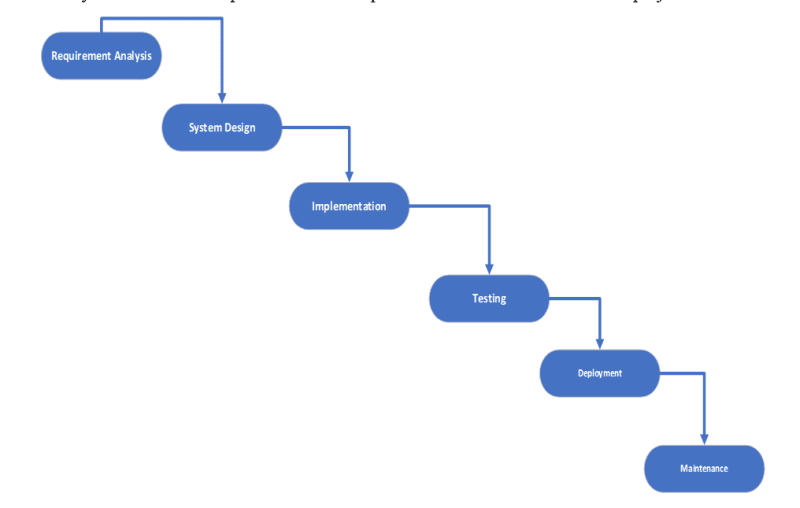The waterfall model is the first model in software development history. It is also referred to as the (Linear sequential life cycle model) this model is simple to understand and use. In the waterfall model, each phase is completed before moving to the next phase. The waterfall model is the first and earliest approach used in SDLC for the development of software products in this model do not overlap.
Waterfall Model Design
The waterfall approach was the first approach in the software development life cycle and was widely used in the development of software products and for the success of the project.
The sequential phases of waterfall models are.
Requirement Analysis.
All the key requirements of the system development and captured in this phase and we document them in the software requirement specification document.
System Design.
The requirement specification from the first phase is studied in this phase and these requirements help us to define the overall system design and architecture of the system.
Implementation.
After defining the clear and rich requirements the fourth step is building and developing the software product according to the defined standards. Software organizations start coding and designing products this step involves the implementation of all the pre-and post-condition of a project like the development of complete functionalities of the software product according to the requirement verified by senior members of teams and all the stakeholders of the project.
Integration and testing
In this step of the software development life cycle, we define the testing strategies in which we do the testing of different modules, and we check that either every module is behaving and functioning according to the standard definition or according to the requirements define in the first phase of the SDLC process.
Deployment
After the complete testing of the product and the product is formally ready for deployment then the of time product is released in the stages according to the deployment plains of the organization. And some time product deployment is dependent on the feedback of the customers.
Maintenance
This activity is involving the modification of software to meet the customer and market new trends. Modification means that improve the system to such standards that can support today's technologies and meets the customer requirement efficiently.
Applications
The waterfall model is widely and extensively used in the software industry some given below point explains the usage of the Waterfall model.
- The requirement is very well clear and fixed
- Product Definition is stable and well defined
- No ambiguity in the requirements
-
Due to the rigidity of the model projects are short
Advantages of Waterfall models
Simple and Easy to understand
Clearly and defined stages
Easy to arrange tasks
Process and results are well documented
Works well when the project is small
Easy to manage due to the rigidity of the model
Dis-Advantages of Waterfall models
- The high number of risks and uncertainty
- Poor model for long and ongoing projects
- Not suitable for life-critical systems because of the rigidity
- Difficult to manage projects progress within stages
- Not suitable for the project that they are following an Object-oriented approach.
- Cannot accommodate the requirement change process.
- Reference: Software Requirements Engineering Practical Approach
If you want to study the What is Software Development Life Cycle then Read the Article from given Link: Software Development Life Cycle



Top comments (0)